A joint and combined military force of American and Filipino soldiers under the US Army, Philippine Commonwealth Army, and Philippine Constabulary aided Allied liberation efforts in the Philippines in 1944 and 1945. Pictured are Lieutenant Hombre Bueno (Philippine Commonwealth Army), Lieutenant William Farrell (US Army), guerrilla Leader Major Robert Lapham (US Army and Luzon Guerrilla Armed Force (LGAF)), Lieutenant James O. Johnson (US Army), Lieutenant Henry Baker (US Army), and guerrilla leader Lieutenant Gofronio Copcion (LGAF). Johnson and Farrell were graduates of the Alamo Scouts Training Class. Photo U.S. Army Special Operations in World War II, CMH Publication 70-42, Center of Military History, courtesy of the US Army.
After their escape from the Japanese, six of the Palawan survivors reached Morotai in the Dutch East Indies on January 6, 1945. Prior to their arrival, however, General Douglas MacArthur’s headquarters had not verified the information it had received from Filipino guerrillas about what had happened at Camp 10-A on Palawan.
Initially, MacArthur’s intelligence staff treated the survivors with skepticism before they uncovered the details of what happened at Palawan. On January 7, his first day on Morotai, Army Private First Class Eugene Nielsen appeared before a US Army Captain from G-2 for his debriefing. From Nielsen’s perspective, it amounted to an official interrogation. Clearly, Army Intelligence had not been aware of the full details of the incident until then. The intelligence staff, furthermore, tended to undervalue reports from Filipino guerrilla units and discount their reports as inflated.
Marine Sergeant Rufus Smith, who had been captured when Corregidor fell, noted, “It was just one interrogation after another from one G-2 officer to another one.” What Smith and the other Americans recounted was the horrible massacre of the American POWs on December 14, 1944 at Camp 10-A near Puerto Princesa, Palawan. Private Nielsen observed, “We were questioned on everything and gave out all the information we knew.”
As the debriefings of the survivors went on in Morotai, the Luzon campaign was getting underway. On the morning of January 9, assault forces came ashore, and nearly 175,000 men landed within a few days.
Initially, Intelligence officers classified reports of the Palawan massacre “Top Secret” and cautioned survivors about publicly disclosing details. Word of the massacre, nonetheless, was out. The guerrilla network in the Philippines certainly was aware of the massacre and its implications. American commanders soon were sensitized to the seriousness of the threat to the POWs and internees still in Japanese hands. In less than a month, four daring raids freed over 7,000 POWs and internees in the vicinity of Manila.
On 26 January, Major Robert Lapham, an American officer who had escaped from Bataan and became the leader of the Luzon Guerrilla Armed Force (LGAF), warned that over 500 POWs at Cabanatuan were in danger of being executed, similar to what had happened at Palawan.
On the morning of January 28, Lieutenant Colonel Henry Mucci, commander of the 6th Ranger Battalion, alerted Captain Bob Prince to develop a plan for a raid behind Japanese lines “to free the POWs” at Cabanatuan. Almost by chance Prince got the mission; Captain Art Simons, the senior company commander in Mucci’s battalion, and his unit were on another mission on an island in Lingayen Gulf. Colonel Arthur “Bull” Simons is perhaps best known for his leadership in the 1970 Son Tay Raid.
The force Mucci envisioned for the operation consisted of about one hundred Rangers. It included Prince’s C Company, augmented with an additional platoon from F Company, a battalion headquarters detachment with medics and radio operators, two Alamo Scout special reconnaissance teams from Sixth Army, and four soldiers from the Signal Corps with radios and who could also photograph and document the raid. The force set out that afternoon.
In the town of Guimba, Colonel Mucci and Captain Prince met with Major Lapham and two officers of his Luzon Guerrilla Armed Force, Captains Juan Pajota and Eduardo L. Joson. Lapham briefed the Rangers on the details of the camp and the enemy situation. Although Lapham wanted to go with his troops on the raid, he was not allowed due to the risk of him possibly being captured, in which case he would be executed and used for Japanese propaganda. Even though lapham did not accompany him on the mission, Prince had particular praise for Pajota and Joson. He observed, “The Filipino guerillas were exceptionally capable.”
Captain Prince described the Cabanatuan raid “as sort of a combined operation.” “It wasn’t just the Rangers that day,” Prince attested. He noted that the mission required the efforts of his Rangers, the Alamo Scouts, the US Army Air Force, Philippine guerrillas, and Philippine civilians who provided the ox carts used to evacuate the POWs. Initially the force had secured 10 ox carts, but they wound up using 50 over the course of the withdrawal back to friendly lines. Concerning the support from the local Filipinos, he assessed “that even though we were behind enemy lines, we were totally in friendly territory.” Robert Prince’s oral history in the collection of The National World War II museum is available here.
The raid by elements of Mucci’s 6th Ranger Battalion and Alamo Scouts, supported by about 400 of Lapham’s guerrillas, freed 522 POWs, including 492 Americans, at Cabanatuan on January 30. During the raid on the camp, Captain Juan Pajota and 250 of his guerillas blocked Japanese troops from intervening. During the egress, Lapham’s guerrillas provided the rear guard, flank security, and positioned food caches along the route for the POWs.
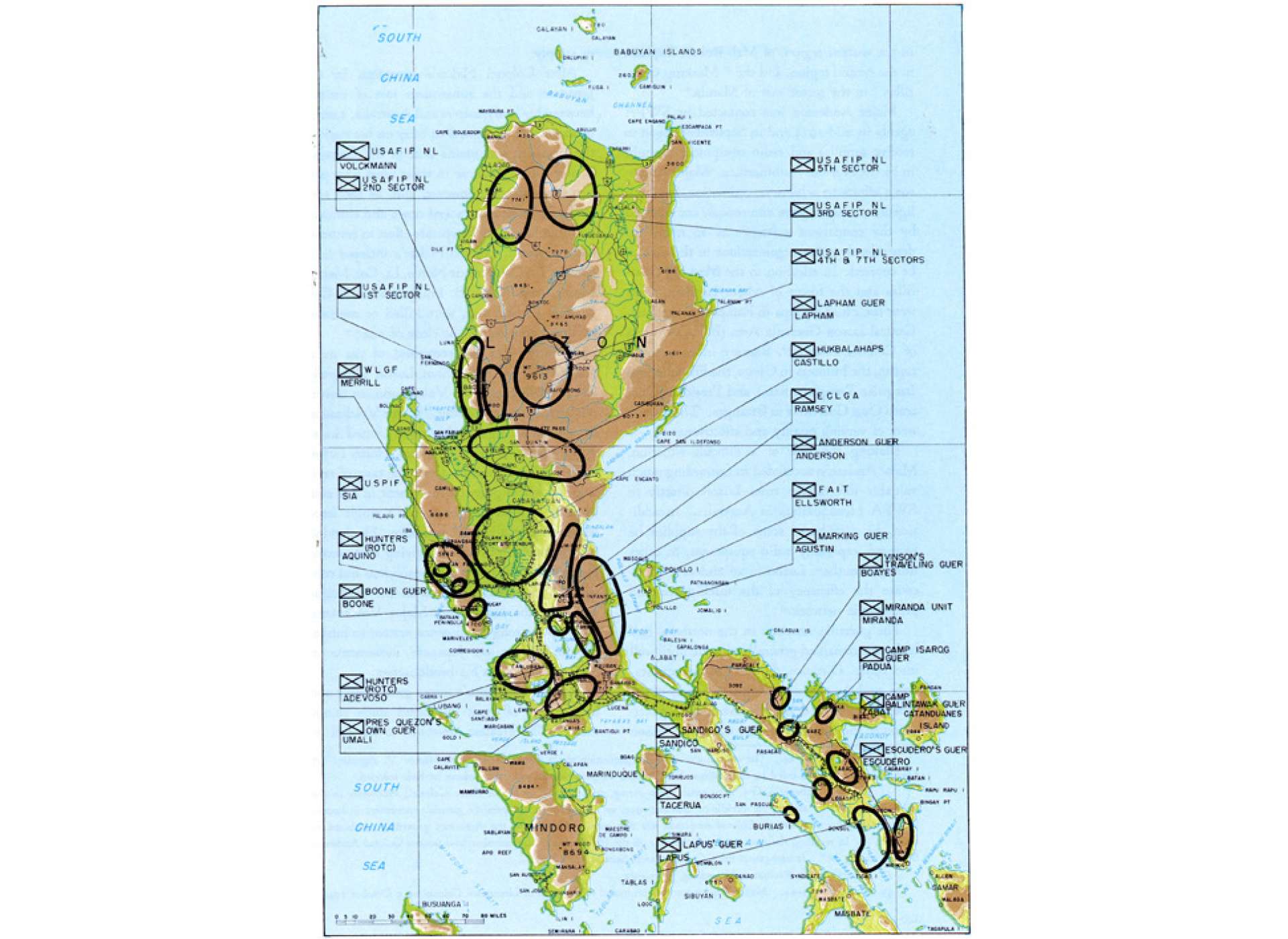
Philippine Commonwealth Army guerrilla forces on Luzon, October-November 1944. These forces enabled the Allied campaign on Luzon and the facilitated the raids to liberate POWs and internees after word of the Palawan massacre. Shortly after General Douglas MacArthur’s return to Leyte, he said, “As our forces of liberation roll forward the splendid aid we are receiving from guerrilla units throughout the immediate objective area and adjacent islands causes me at this time to pay public tribute to those great patriots both Filipino and American who had led and supported the resistance movement in the Philippines since the dark days of 1942.”
Courtesy of the US Army, Reports of General MacArthur: The Campaigns of MacArthur in the Pacific, Vol. 1, Plate 91
MacArthur had been impatient with the pace of the Luzon campaign, and after launching the raid on Cabanatuan, he ordered additional rescue operations. On January 31, MacArthur told Major General Verne C. Mudge, the commanding general of the 1st Cavalry Division, “Go to Manila! Go around the Japs, bounce off the Japs, save your men, but get to Manila! Free the internees at Santo Tomas!” MacArthur also wanted the troopers to liberate the prisoners believed to be held in Manila at the Malacanan Palace and the legislative building.
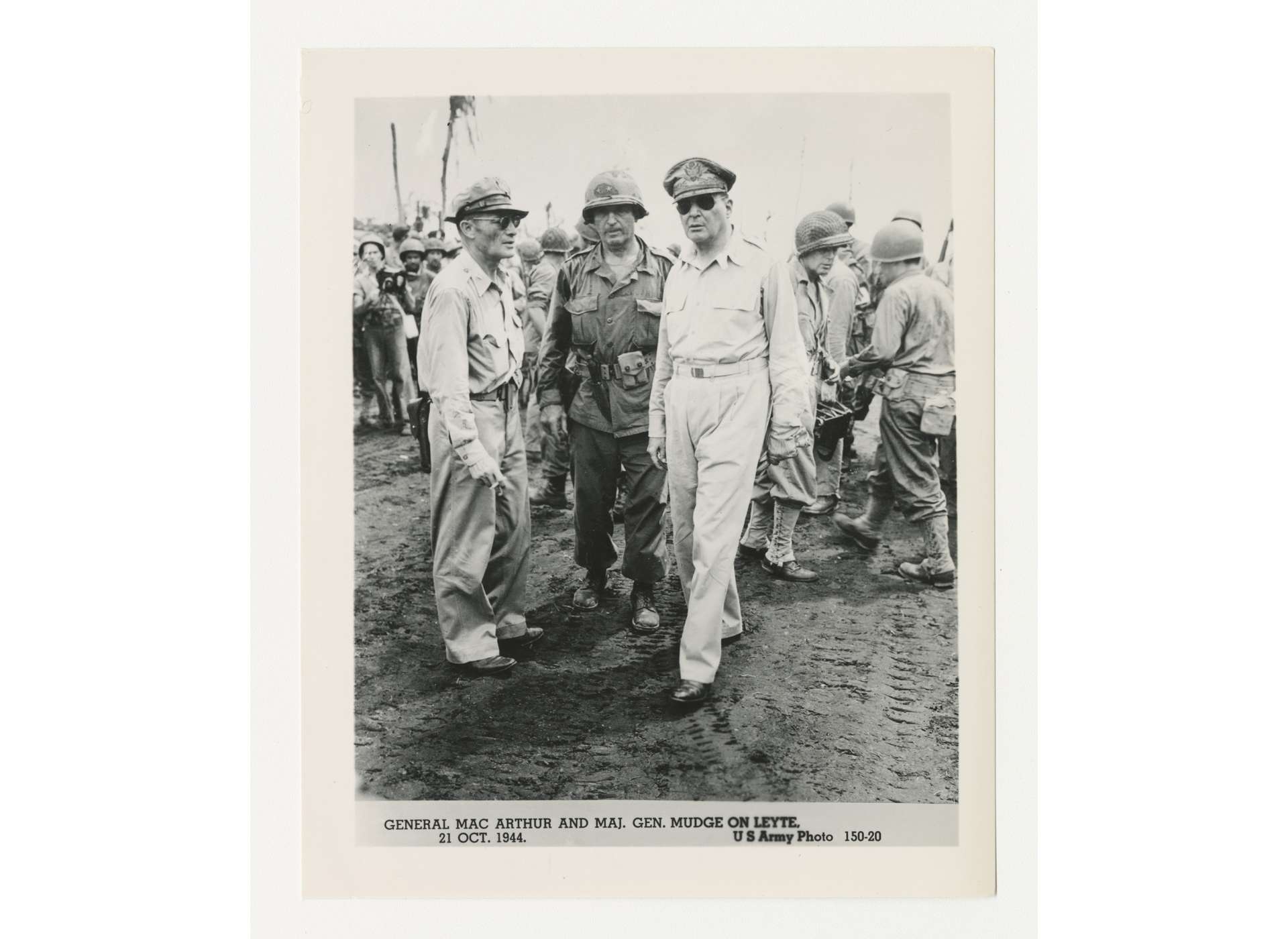
General Douglas MacArthur (right) conferring with Major General Verne C. Mudge (center), commanding general of the 1st Cavalry Division during the earlier Leyte campaign. On January 31, 1945, as the Cabanatuan raid was underway, MacArthur ordered Mudge to send his troopers to Manila and free the internees at Santo Tomas. US Army Photo, Gift of Lyle Eberspecher, from the Collection of The National World War II Museum, 2013.495.938.
The next day, as the liberated POWs from the Cabanatuan raid cleared the road, a “flying column” of two motorized cavalry squadrons from the 8th Cavalry Regiment supported by tanks and motorized artillery raced ahead. Under the command of Brigadier General William C. Chase the column penetrated over 100 miles into Japanese territory. At some points vehicles in the flying column were moving at fifty miles per hour, as the 8th Cavalry pressed forward to seize the internment camp.
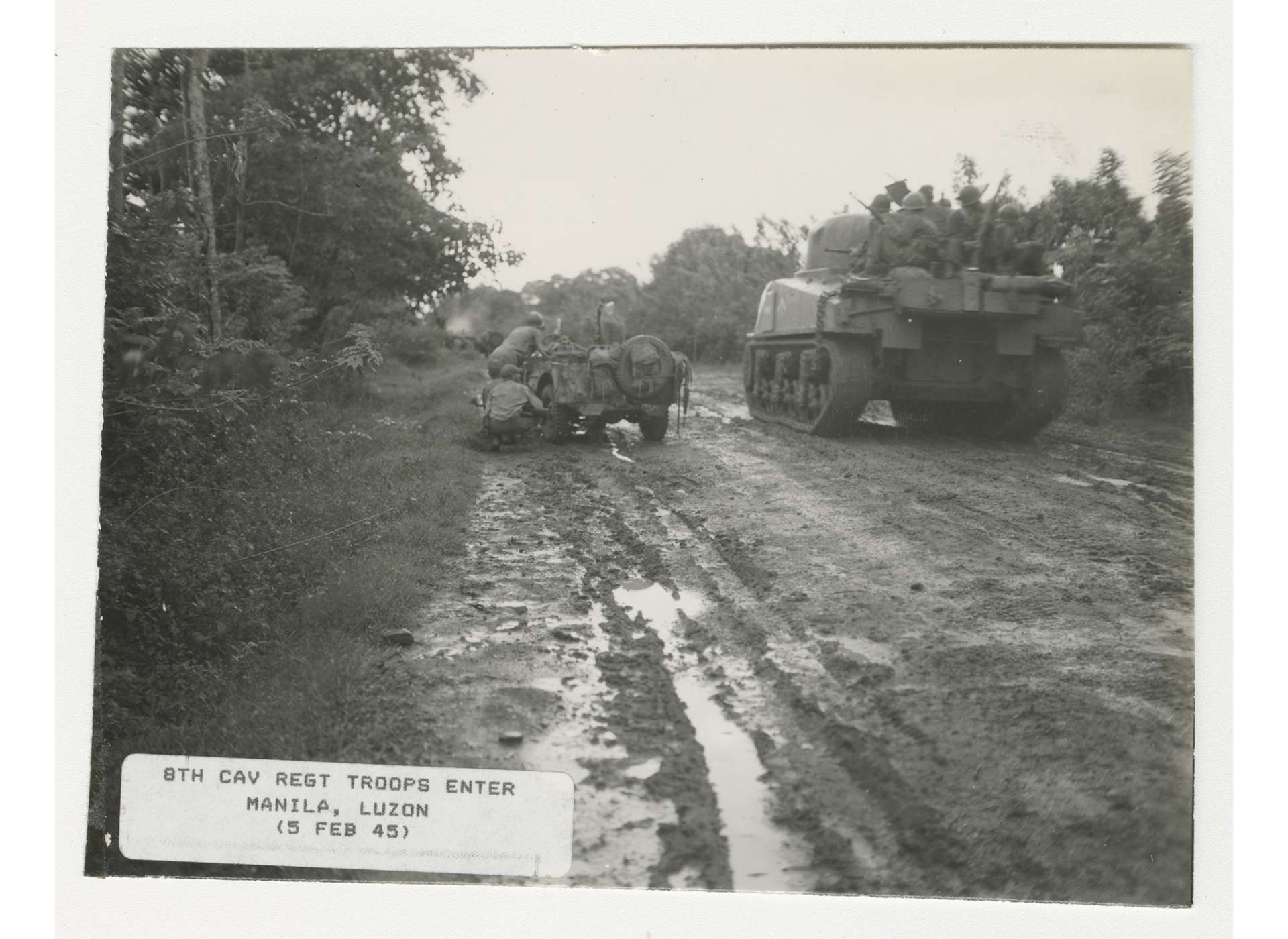
Troopers of the 8th Cavalry’s “flying column” supported by tanks raced to reach Manila on February 3, 1945 and free the internees at Santo Tomas University. US Army Signal Corps Photograph, Gift of Donald E. Mittelstaedt, from the Collection of The National World War II Museum, 2008.354.495.
On the evening of February 3, the flying column pushed into the northern suburbs of Manila. There the column was greeted by two Filipino guerrillas, who guided the American troopers to Santo Tomas University. Captain Manuel Colayco led the column safely past Japanese mines, but he was killed by a sniper outside the camp.
Despite the setback and brisk firefight outside the camp, the rescue operation continued. The tank “Battling Basic” from the 44th Tank Battalion crashed through the gate of Santo Tomas University, which had become an internment camp holding 3,785 civilians, including 2,870 Americans. After brief resistance, the compound was liberated, although Japanese troops continued to hold 275 Americans as hostages for a couple days. Meanwhile, as Santo Tomas was being liberated on February 3, F Troop, 8th Cavalry with the aid of Filipino guerrillas had raced through sniper fire to secure the presidential residence, Malacanan Palace, and prevent it from being torched. The legislative building, across the river, however, could not be reached.
Soldiers of the 37th Infantry Division that also had been racing toward Manila to the west of the 1st Cavalry, reached Bililbid Prison on the evening of February 4. Filipino guerrillas of the East Central Luzon Guerrilla Area facilitated the movement of the 37th Infantry Division, clearing out Japanese resistance and serving as guides. Breaking into the Bililbid compound the “Buckeyes” discovered that the Japanese guards had fled earlier that day and liberated 1,330 American and Allied POWs and civilian internees.
Finally, on February 23 a combined force secured the University of the Philippines campus at Los Baños that had been converted into a prison camp. Soon after his arrival on Luzon, Major General Joseph Swing, the commanding general of the 11th Airborne Division was told to give a priority to liberating Los Baños as soon as possible. The camp was southeast of Manila about 40 miles behind Japanese lines. Much of the intelligence gathering leading up to the raid had been the work of Filipino guerrilla groups such as President Quezon’s Own Guerrillas operating south and east of Manilla.
The daring raid consisted of a parachute drop by B Company, 1st Battalion, 511th Parachute Infantry Regiment orchestrated with an attack on the camp by Filipino guerrillas of the 45th Hunter's ROTC Regiment and other supporting groups. Meanwhile, the remainder of the 1st Battalion conducted a move to the camp in 54 LVT-4 amphibious tractors of the 672nd Amphibian Tractor Battalion. The Amtracs would transport the liberated to safety. The 11th Airborne Division rescued 2,147 in that raid.
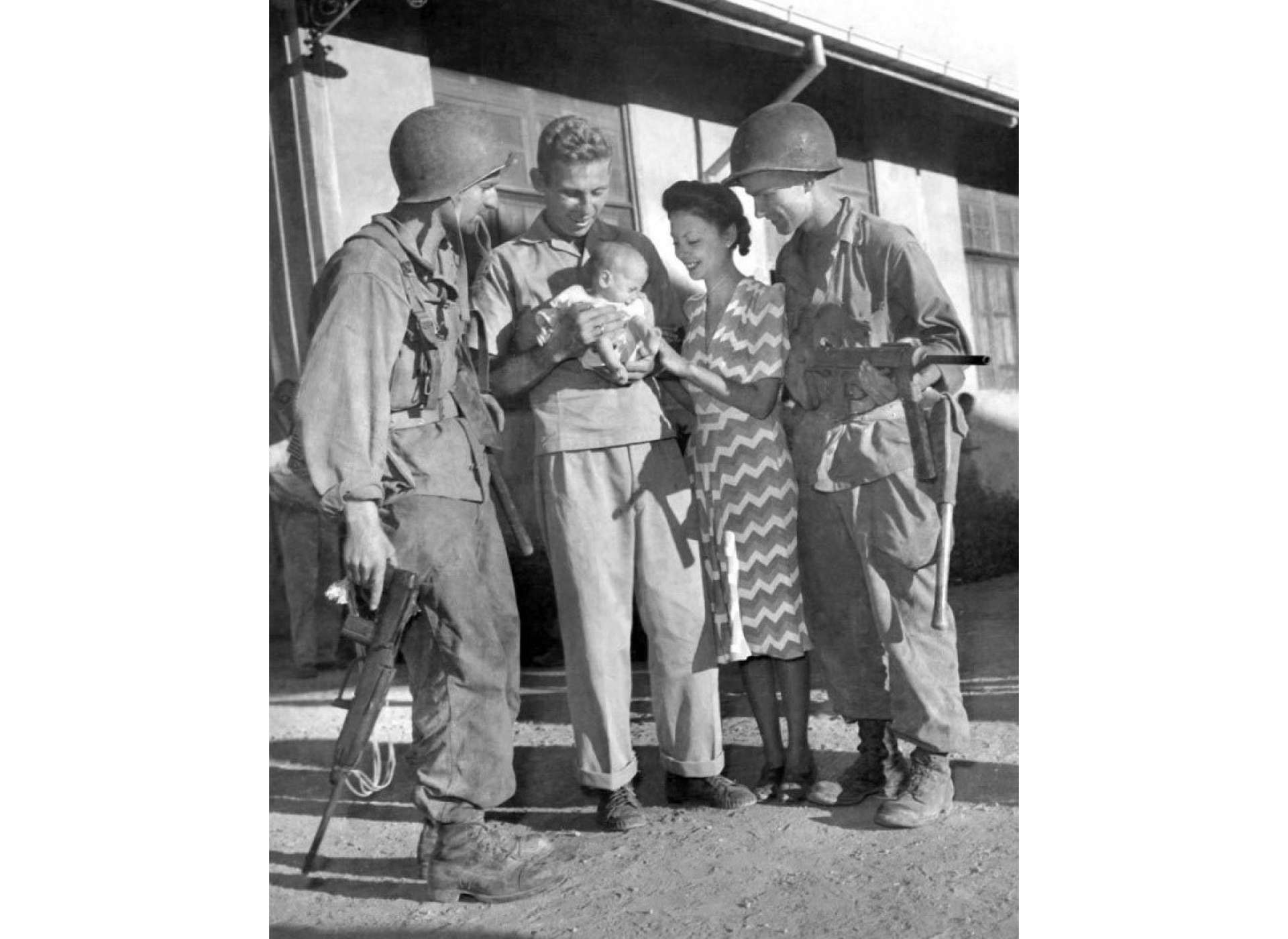
Los Baños internees, Hal Bowie and his wife and baby daughter, with 11th Airborne paratroopers shortly after the raid, 23 February 1945. US Army Signal Corps Photo courtesy of the National Archives.
A few days later, on February 28, the US Eighth Army conducted an assault landing on Palawan. On that same date, the Palawan Special Battalion, instrumental in safeguarding the POWs who survived the massacre on Palawan, came under the operational control of the US 41st Infantry Division. By March 2, Allied forces controlled most of the island. At Camp 10-A, soldiers of the “Sunset Division” came across the personal effects of the executed POWs, and between March 15 and 23, the bodies in the trenches were exhumed. The remains of 123 men were recovered.
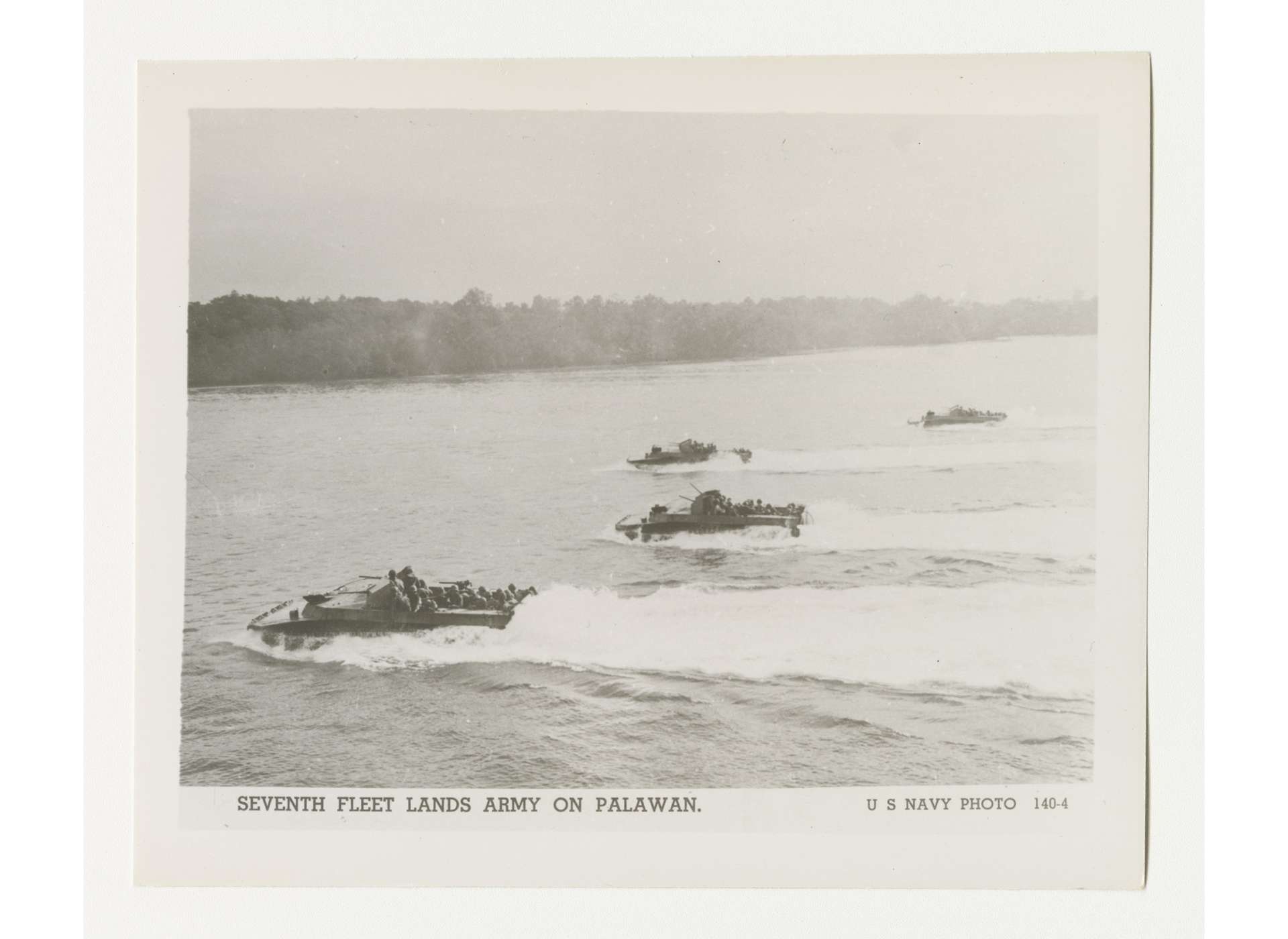
On February 28, 1945, the US 41st Infantry Division conducted an assault landing at Palawan in US Navy LVTs (Landing Vehicles, Tracked). On the same date, the Palawan Special Battalion, instrumental in the safeguarding the POWs who survived the massacre on Palawan, came under the operational control of the division. US Navy Photo 140-4, Gift of Lyle E. Eberspecher, from the Collection of The National World War II Museum, 2013.495.902.
It is likely that many of the perpetrators of the December 14 massacre died in the fighting on Palawan. Captain Nagayoshi Kojima and Lieutenant Sho Yoshiwara were not among those brought to trial for their criminal actions after the war. It is presumed that they were among the 80,000 Japanese lost in the battle for the Philippines.
In 1948, however, sixteen Japanese soldiers stood trial in Yokahama for war crimes at Palawan. Six were acquitted of the charges against them. The remaining 10 received sentences ranging from two years in prison with hard labor to death by hanging. Lieutenant General Seiichi Terada, commanding general of the Japanese 2nd Air Division headquartered in the Philippines, was sentenced to life. The head the of kempeitai at Camp 10-A, Master Sergeant Taichi Deguchi, was sentenced to be executed, but in July 1950 MacArthur commuted his sentence to confinement with hard labor for 30 years.
In 1958, any of those still in prison were released from Tokyo’s Sagumo Prison as part of a general amnesty.
In 1952, the remains of 123 of the 139 Palawan massacre victims were reinterred and brought back to the United States. They are buried in a mass grave in the Jefferson Barracks National Cemetery near St. Louis. Their horrible fate on Palawan led to the rescue of nearly seven thousand POWs and civilian internees in the Philippines. May they rest in peace.
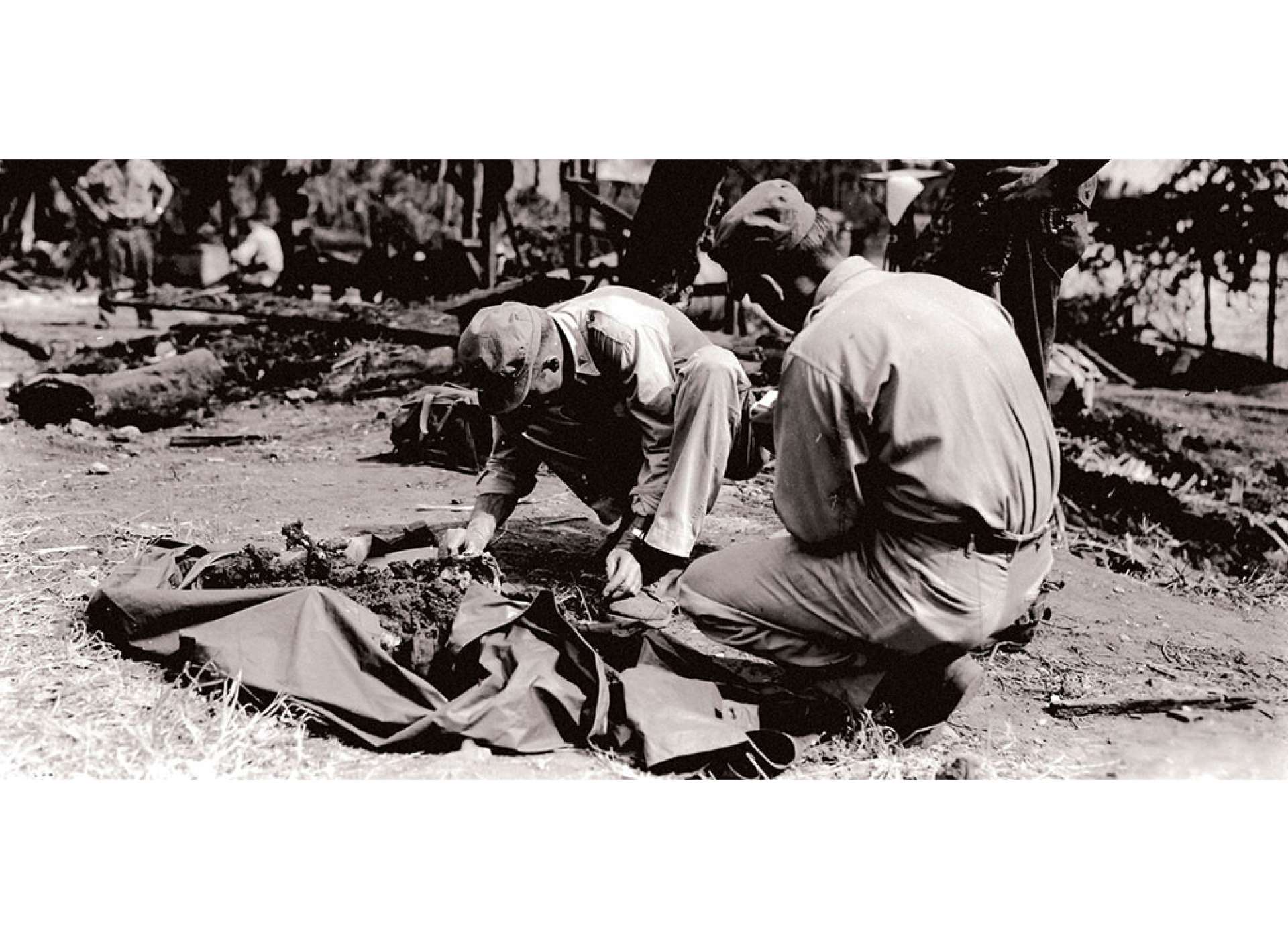
During recovery operations at Camp 10-A in March 1945, officers and medical personnel looked for anything to help them identify the victims of the Palawan massacre. In 1952, the remains of 123 of the victims were reinterred in a mass grave in the Jefferson Barracks National Cemetery near St. Louis. Photo courtesy of the US Army.
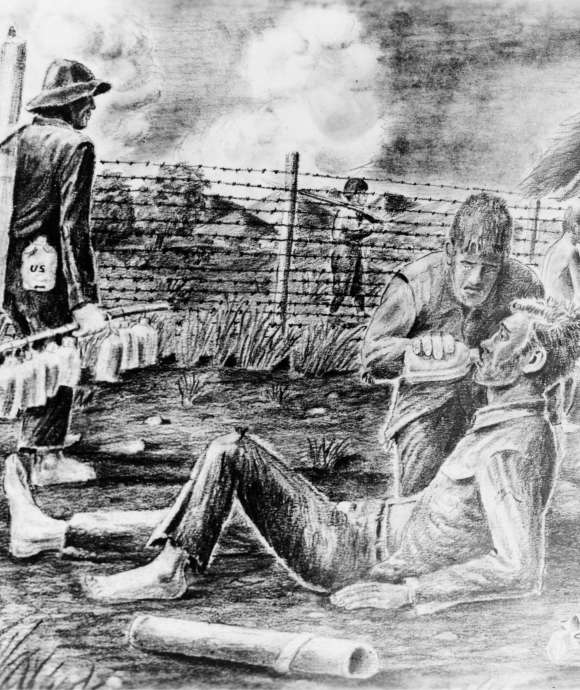
Part 1: ‘Dispose of the Them’: Massacre of American POWs in the Philippines
As the Allied liberation of the Philippines was underway, Japanese commanders acted on orders to annihilate American POWs rather than allow them to assist enemy efforts, and in December 1944 cruelly executed 139 American POWs on Palawan.
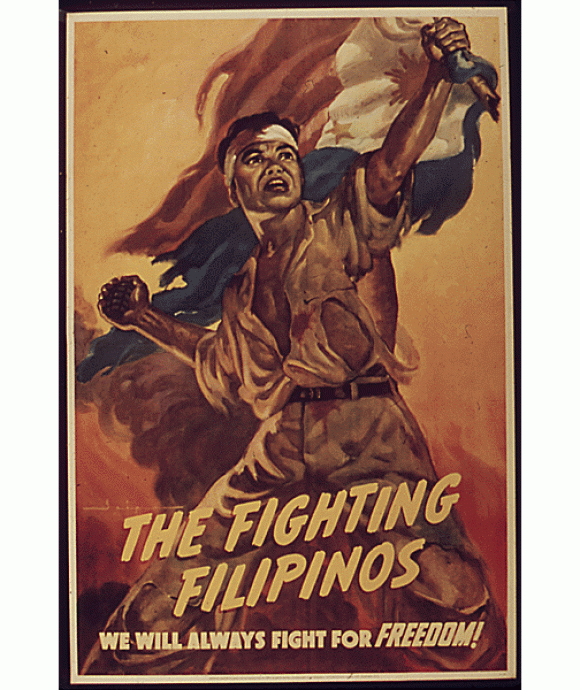
Part 2: Survival, Resistance, and Escape on Palawan
Incredibly, a handful of American POWs managed to survive the Palawan massacre and with the aid of Filipino guerrillas reached safety.
Michael S. Bell, PhD
Mike Bell is the Executive Director of the Institute for the Study of War and Democracy.
Cite this article:
MLA Citation:
APA Citation:
Chicago Style Citation:
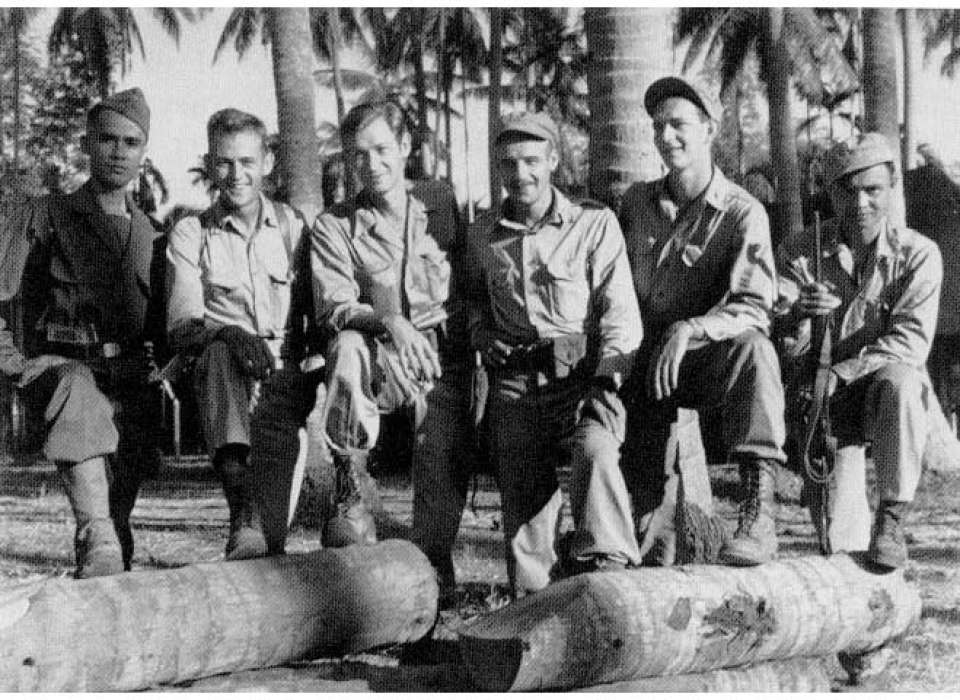






![Max Fuchs, New York City cantor, sings as Rabbi Sydney [sic] Lefkowitz, Richmond, VA, conducts the first Jewish services from Germany.](/sites/default/files/styles/max_650x650/public/2025-10/image1.jpg)

